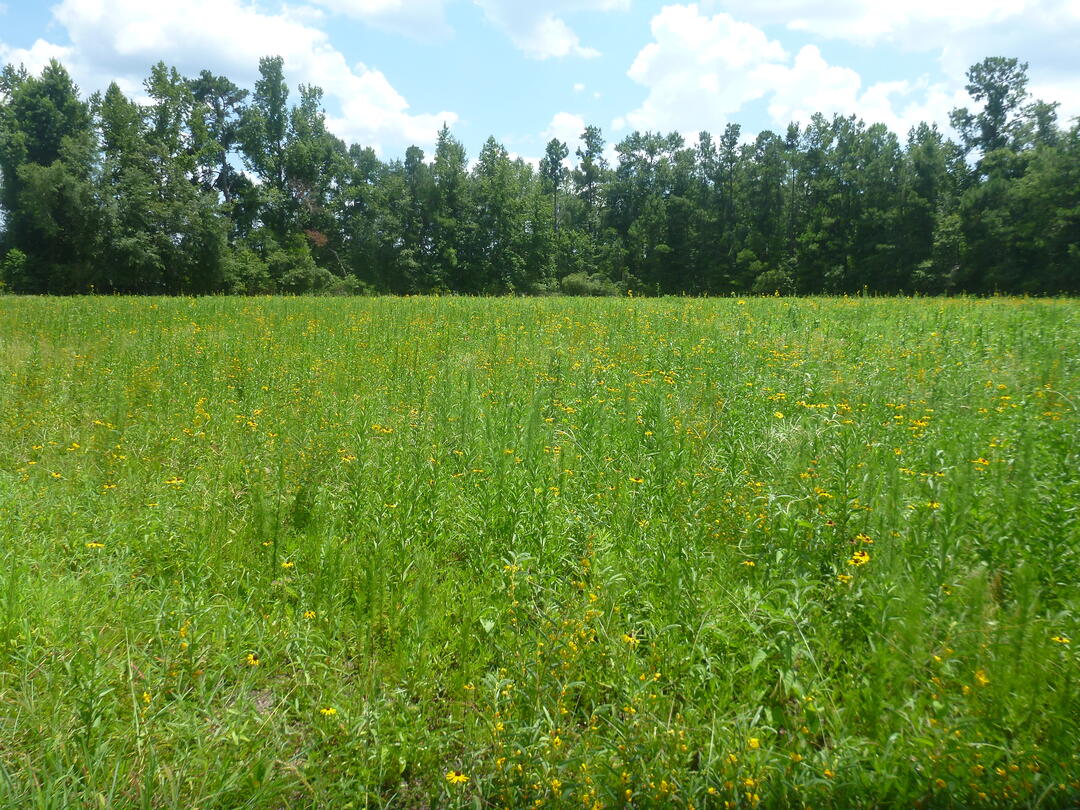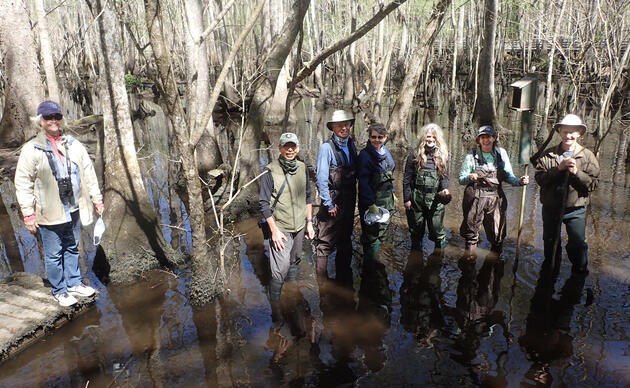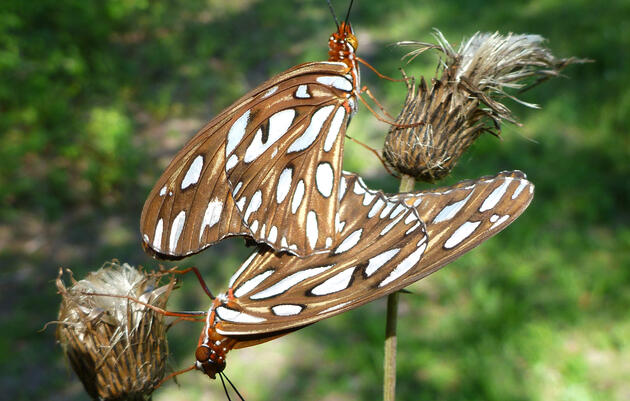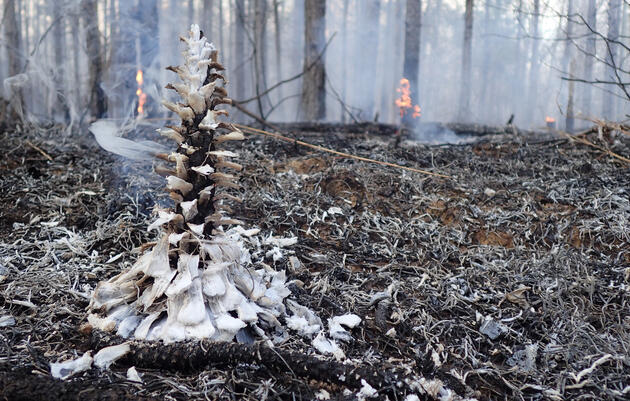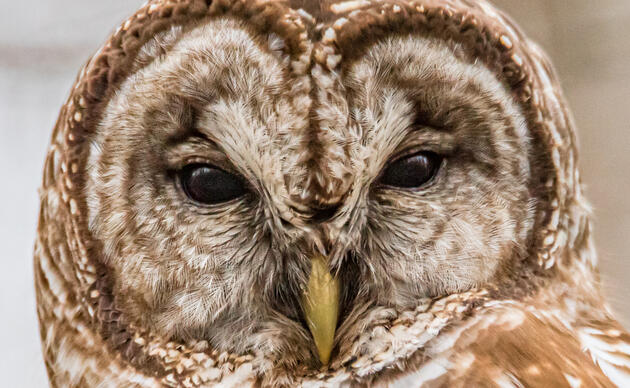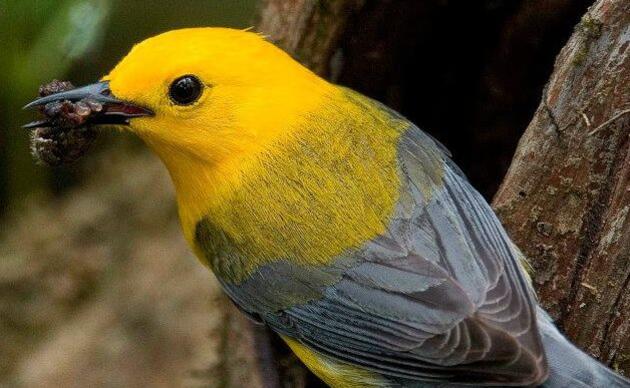In the world of pollinators, a manicured grass lawn is like a desert, there is nothing there for them. That means that those nuisance dandelions become oases, precious sources of pollen and nectar in a field otherwise devoid of food sources.
A grass lawn is a monoculture, an area where all plants in an area are the same species. Monocultures greatly limit the number of wildlife species that benefit from their presence, which is why if you want to support native wildlife, you want to get as much of a variety of native plants as possible, both grasses and flowering plants. With multitudes of pollinators using your lawn as a resource, flocks of birds will then also arrive, keen to eat at the buffet you've created for them.
By maintaining native grassland habitat, we are creating a space that is attractive to birds like Painted Buntings and Northern Bobwhites. By starting with the ground up (or rather, the roots down of native plants), we are supplying entire ecosystems from producer to apex predator with the resources they need to continue thriving in the state of South Carolina.
Prescribed Burns
For thousands of years certain habitats relied on natural fires to maintain the balance. We're turning the heat back on.
How you can help, right now
Boardwalk Tickets
We're open Wednesdays thru Saturdays 9 AM to 5 PM and
Sundays 11 AM to 4 PM.
Beidler Membership
Click here to purchase a membership, which provides free admission for a year and other benefits. We offer both Individual and Family Memberships.
Donate to Beidler Forest
If you wish to support us, please consider donating. 100% of your donation goes back into Beidler Forest.


